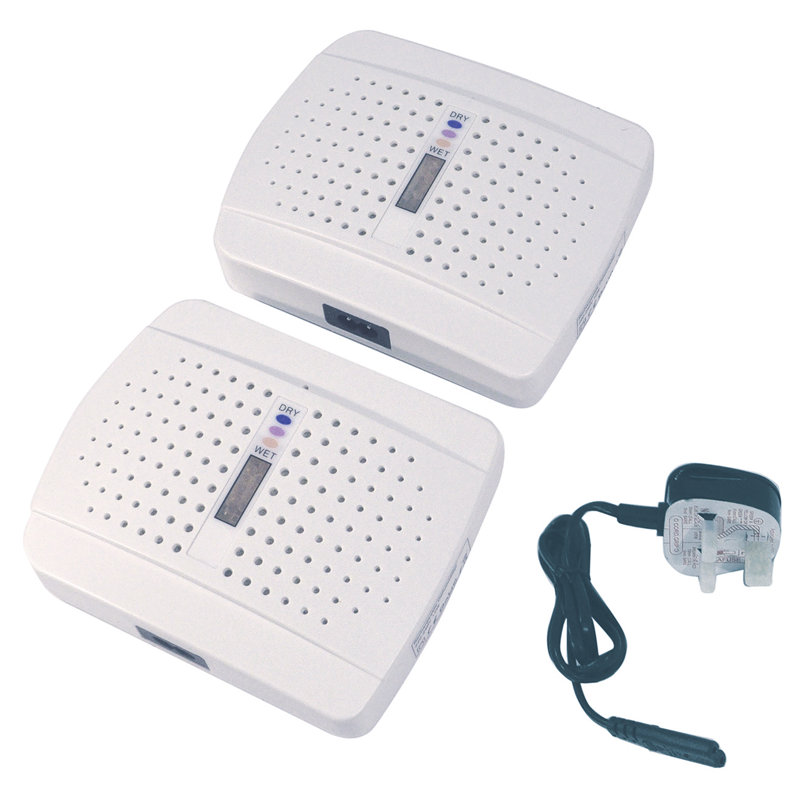6 reasons why your dehumidifier is not collecting water — and simple fixes to get it back on track
Troubleshooting tips to revive your broken dehumidifier and keep dampness and humidity at bay

A broken dehumidifier can be a real headache, especially when you’re counting on it to keep your home dry and comfortable. If your dehumidifier isn’t collecting water, it’s easy to fear the worst. But don’t worry – most issues are simpler to resolve than you might think. With a little troubleshooting, you can get your unit back up and running in no time.
Dehumidifiers are brilliant for tackling excess moisture, preventing mould, and freshening up your home. However, like any appliance, they need the right conditions and regular care to perform their best. Identifying why your dehumidifier has stopped collecting water is the first step towards a solution.
Below, we’ve outlined the six most common reasons your dehumidifier might not be working properly – and how to fix them. From cleaning filters to managing cold conditions, we’ll help you get things back on track.
1. The water tank needs emptying
Sometimes, the simplest solution is the answer. If your dehumidifier’s water tank is full, the unit will automatically shut off to prevent overflow. Chris Michael, manager director of Meaco, explains, “Dehumidifiers have a float which measures when the tank has reached its limit. At this point, the unit will stop collecting water and turn off.”
To check, remove the tank and empty any collected water. Ensure the tank is securely reinserted before restarting the dehumidifier. If the tank isn’t full but your dehumidifier still isn’t collecting water, inspect it for leaks or cracks that might be causing the issue.

Chris and his partner Michelle started Meaco in 1991. Meaco is now regarded internationally as a major player in the dehumidifier industry selling to 20+ countries throughout Europe, North America and South Africa. Meaco sets the benchmark for quality and development in its sector, leading by example and reducing the energy consumption of its appliances.
Best Rated Dehumidifiers

This energy-efficient dehumidifier removes up to 20L daily, features a HEPA filter for cleaner air, and includes smart settings like laundry mode and digital controls.
2. The humidity level is too low
Dehumidifiers rely on a certain level of humidity to function effectively. If the air in your home is already dry (typically below 40% relative humidity) your unit may not collect water because there simply isn’t enough moisture to extract.
“This is a good thing and not something to worry about!” explains Chris Michael. “For example, Meaco dehumidifiers are equipped with ‘Meaco Control Logic’ which means the dehumidifier will test the air every 30 minutes to check if the humidity has or has not increased. The dehumidifier will only start running again if the humidity has increased more than 3% above target.”
To determine whether this is the case, use a hygrometer to measure your home's humidity levels. If the levels are low, this may be a positive indication that your dehumidifier has already done its job. To keep your dehumidifier performing at its best, check its settings and adjust them to maintain a comfortable humidity range of 40–60%.

Keep track of your home's humidity levels with this easy-to-read hydrometer. If the room climate is too damp or too dry, the device lets you know, so you can adjust your dehumidifier settings accordingly.
3. The room is too cold
Have you ever wondered whether dehumidifiers work in cold rooms? Many standard models struggle in low temperatures, particularly below 15°C. According to Chris Michael, poorly designed dehumidifiers often lack an internal cooling system suited to the British climate, leading to ice buildup on the coils. In even colder environments, such as garages below 10°C, this ice can turn into a solid block, completely disrupting their performance. “These models aren’t designed for colder climates like the UK and are best suited for summer temperatures around 27°C or even higher,” he explains.
To avoid these issues, look for a dehumidifier that’s specifically built to handle cooler conditions. Some models are designed with technology that prevents ice from forming, ensuring it continues to collect water even when temperatures drop. This is also where desiccant vs compressor dehumidifier technology becomes important. Compressor models tend to struggle in colder spaces because they rely on warm air to function, whereas desiccant dehumidifiers use a drying agent that works efficiently in low temperatures.
If you’re facing issues with your current unit, try moving it to a warmer part of your home or consider upgrading to a model better suited for cooler environments.

This lightweight desiccant dehumidifier removes up to 9L daily, works in temperatures as low as 1°C, features antibacterial filtration, and offers a laundry mode.
4. The filter needs cleaning

A clogged or dirty filter is one of the most common reasons why a dehumidifier stops collecting water, so it's a good idea to learn how to clean a dehumidifier to keep it running smoothly.
"Dehumidifiers contain filters that should be cleaned at least every two weeks to prevent dust, dirt, and other particles from clogging the internal parts," explains Chris Michael. Dirty filters can restrict airflow, forcing your dehumidifier to work harder and affecting its ability to collect water. To resolve this, try the following steps:
- Remove the filter and inspect it for dust or debris.
- If the filter is reusable, gently clean it with a vacuum or, if it’s washable, rinse it with warm water. For stubborn dirt on non-washable filters, wipe it with a slightly damp (not wet) cloth and allow it to dry completely before reinserting.
- Replace disposable filters as recommended by the manufacturer, usually every 6–12 months.
5. The dehumidifier isn't properly positioned
Where you place your unit plays a significant role in how well it collects water. Dehumidifiers are not designed for use in small spaces, so you should avoid placing the unit in tight corners or rooms smaller than 4m2. Placing a dehumidifier near a heat source can also reduce its efficiency.
To keep your unit collecting water, ensure it has adequate space around it for airflow and keep windows and doors closed to help your dehumidifier focus on removing moisture from the room it’s in. If you need to tackle damp and condensation in tiny spaces – like wardrobes or cupboards – you may want to consider alternative options such as silica gel packets or rechargeable dehumidifiers.

These rechargeable moisture removal dehumidifiers are compact and easy to use. They are ideal for use in any small space such as cupboards, wardrobes and storage boxes and help to reduce unwanted moisture that can be the cause of mildew and mould.
6. There could be a mechanical or electric fault
Mechanical or electrical faults can sometimes be the cause when your dehumidifier stops collecting water. Staying on top of routine dehumidifier maintenance and learning how to fix a broken dehumidifier can help you determine whether the issue is repairable or if it’s time to consider a replacement. Some common faults include:
- A broken compressor: The compressor is a critical component in most dehumidifiers, especially compressor-based models. It works by compressing and cooling the refrigerant to condense moisture from the air. If the compressor is damaged or malfunctioning, the entire dehumidification process is disrupted, leaving the unit unable to collect water at all. Unfortunately, this issue often requires professional repair or replacement.
- Refrigerant leaks: Refrigerant is essential for the cooling coils to condense water from the air. If there’s a leak, the refrigerant levels drop, reducing the dehumidifier’s ability to extract moisture. Symptoms of a refrigerant leak may include unusual noises or frost forming on the coils. Leaks should be addressed by a certified technician, as handling refrigerant requires specialised tools and training.
If your dehumidifier isn’t working after troubleshooting all these basic issues, consult the manufacturer’s support team or a qualified technician. If your unit is under warranty, repairs may still be covered. For older models, however, it might be more cost-effective to upgrade to a newer, energy-efficient model.
Get the Homebuilding & Renovating Newsletter
Bring your dream home to life with expert advice, how to guides and design inspiration. Sign up for our newsletter and get two free tickets to a Homebuilding & Renovating Show near you.

Gabriella is an interiors journalist and has a wealth of experience creating interiors and renovation content. She was Homebuilding & Renovating's former Assistant Editor as well as the former Head of Solved at sister brand Homes & Gardens, where she wrote and edited content addressing key renovation, DIY and interior questions.
She’s spent the past decade crafting copy for interiors publications, award-winning architects, and leading UK homeware brands. She also served as the Content Manager for the ethical homeware brand Nkuku.
Gabriella is a DIY enthusiast and a lover of all things interior design. She has a particular passion for historic buildings and listed properties, and she is currently in the process of renovating a Grade II-listed Victorian coach house in the West Country.


